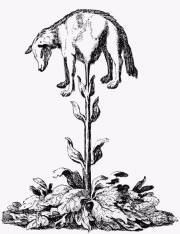FOR IMMEDIATE RELEASE
ACS News Service Weekly PressPac: March 31, 2010
Fabled vegetable lamb plant contains potential treatment for osteoporosis
“Inhibitors of Osteoclast Formation from Rhizomes of Cibotium barometz”
Journal of Natural Products
The “vegetable lamb” plant — once believed to bear fruit that ripened into a living baby sheep — produces substances that show promise in laboratory experiments as new treatments for osteoporosis, the bone-thinning disease. That’s the conclusion of a new study in ACS’ monthly Journal of Natural Products: “Inhibitors of Osteoclast Formation from Rhizomes of Cibotium barometz.”
Young Ho Kim and colleagues point out that osteoporosis is a global health problem, affecting up to 6 million women and 2 million men in the United States alone. Doctors know that the secret to strong bones involves a delicate balance between two types of bone cells: Osteoblasts, which build up bone, and osteoclasts, which break down bone.
Seeking potential medications that might tip the balance in favor of bone building, the researchers turned to the “vegetable lamb” plant as part of a larger study plants used in folk medicine in Vietnam. In the 16th and 17th centuries, some of the world’s most celebrated scientists believed the plant (Cibotium barmoetz) fruited into a newly born lamb, which then grazed on nearby grass and weeds. Kim’s group isolated compounds from C. barmoetz and showed that they blocked formation of bone-destroying osteoclasts formation in up to 97 percent of the cells in laboratory cultures without harmful effects on other cells. The substances “could be used in the development of therapeutic targets for osteoporosis,” the article notes.
![]()
Contact
Science Inquiries: Michael Woods, Editor, 202-872-6293
General Inquiries: Michael Bernstein, 202-872-6042

shows the fabled “Vegetable Lamb of
Tartary,” a plant once believed to
ripen into a baby sheep. The plant now
shows promise for treating osteoporosis.
Credit: Wikimedia Commons
(High-resolution version)

